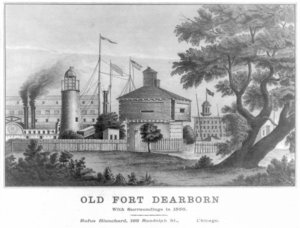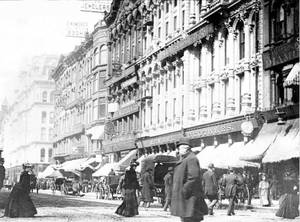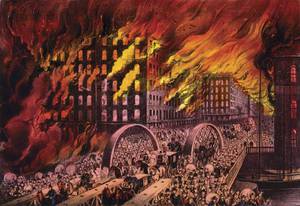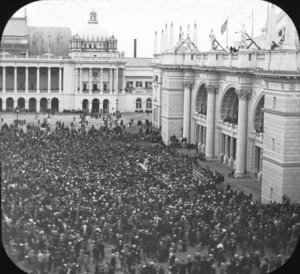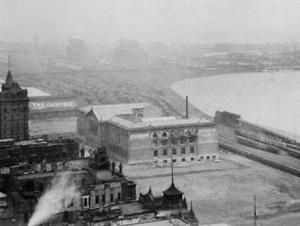Tales From The Past
The first historic mention of Chicago, although that name was not yet attached to the southwestern edge of a lake now known as Lake Michigan, was by the Jesuit annalist Charlevoix. At its first appearance in records by explorers, the Chicago area was inhabited by a number of Algonquian peoples, including the Mascouten and Miami. The first known reference to the site of the current city of Chicago as "Checagou" was by Robert de LaSalle around 1679 in a memoir written about the time. The name "Chicago" is derived from a French rendering of the Native American word shikaakwa, translated as "wild onion" or "wild garlic", from the Miami-Illinois language. During the mid-18th century, the area was inhabited by a Native American tribe known as the Potawatomi, who had taken the place of the Miami and Sauk and Fox peoples.
The 1780s saw the arrival of the first known non-indigenous permanent settler in Chicago, Jean Baptiste Point du Sable, who was of African and European (French) descent. In 1795, following the Northwest Indian War, an area that was to be part of Chicago was turned over to the United States for a military post by native tribes in accordance with the Treaty of Greenville. In 1803, the United States Army built Fort Dearborn, which was destroyed and later rebuilt. The city of Chicago was built around this fort. On August 12, 1833, the Town of Chicago was organized with a population of around 200. Within seven years it would grow to a population of over 4,000. On June 15, 1835, the first public land sales commenced with Edmund Dick Taylor as U.S. receiver of public moneys. The city emerged as an important transportation hub between the eastern and western United States. Chicago's first railway, Galena and Chicago Union Railroad, opened in 1848, which also marked the opening of the Illinois and Michigan Canal. The canal allowed steamboats and sailing ships on the Great Lakes to connect to the Mississippi River.
The city experienced an unparalleled, phenomenal growth through the 1840s,50s, and 60s only to be outdone by cities on the Pacific seaboard like San Francisco. The population reached 100, 000 by the end of the 1860s. People of Irish, Swedish, and Norwegian descent, as well as immigrants of other nationalities converged in Chicago making it a very cosmopolitan city. By the end of the sixties, over 50% of the population had been born outside of the United States.
The time between the early seventies and 1893 was very significant in the history of Chicago, for it rose like the proverbial Phoenix from the ashes of the "Great Chicago Fire" of 1871 to become the splendid host of the World's Columbian Exposition of 1893. The fire devoured more than 17,000 buildings, swept through three square miles of the most densely populated area of the city, destroyed millions of dollars worth of property, and left 90,000 people homeless and nearly 300 dead.
Within five years the city was completely rebuilt. Architects made Chicago the birthplace of modern architecture; the world has been copying her buildings ever since. Within the two decades after the fire Chicago's population grew to a little over a million. The Chicago Stock Exchange opened, the Palmer House Hotel was constructed; the first telephone exchange in the city was established; wholesale and retail merchandising business flourished.
The early nineties brought further growth and sprosperity. In April of 1890 the United States Congress selected Chicago as the site of teh World's Columbian Exposition commemorating the 400th anniversary of Christopher Columbus' arrival on the American shores. The year 1893 found Chicago, like the rest of the country, in the grip of a financial panic known as the "Panic of 1893". Nevertheless Chicago responded to the problem and through the decade various people and organizations sought to remedy it by their services to the less fortunate. In an odd way Chicago had many of the traits we associate with our main subject Swami Vivekananda. It was young, energetic, heroic, visionary, and embodiment of the spirit to conquer the world. At this particular juncture, while "it was the best of times, it was the worst of times" for the city, Swami Vivekananda arrived in Chicago to represent Hinduism at the Parliament of Religions to be held in September, 1893 as a part of the World's Columbian Exposition.
Read more about the Exposition here
Go here to read about Swami
Vivekananda
You can read about Vivekananda's eventful journey to
the Parliament of Religions here


